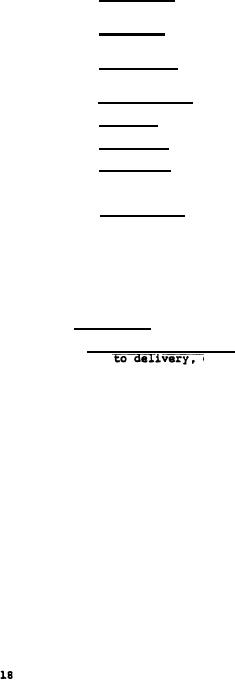 |
|||
|
|
|||
| ||||||||||
|
|  MIL-P-17881D(SHIPS)
#
4.1.2.1 The inspection system shall include a completed part examination procedure
whereby each functionally and dimensionally critical part and assembly, including the final
product, is l xamined on completion in accordance with a completed part examination check list
accompanying each part or assembly. The examination shall be performed by inspection per-
sonnel not engaged in the fabrication and assembly of the part. The check list for each part
shall include accurate part identification and shall list the specific attributes which
determine the parts acceptability. The check list shall be filled in during the time of
examination. The check list shall be arranged in tabular form, calling forth separately
the following examination assignments, each accompanied by the specific attributes of accept-
ability which shall be checked or measured and the findings recorded:
Dimensions. They shall be as indicated on the approved design drawings.
(a)
Rotating parts shall be examined for balance and maximum permissible run
out as indicated on the approved drawings.
Materials. Visual examination for compliance with approved design drawings.
(b)
Any appearance of non-conformance shall be further verified by appropriate
tests.
Cleanliness. Examination for cleanliness shall apply equally to parts
(c)
examination prior to assembly as well as subassemblies and the completed
product.
Missing parts: This examination applies primarily to the completed product .
(d)
prior to shipment.
Assembly. During assembly positioning tolerances and wear ring/impeller
(e)
running clearances shall be verified.
Alignment. The l quipment and its subassemblies shall be examined to insure
(f)
th at the alignment is as specified.
Adjustment. The adjustment of safety, control and monitoring devices shall
(g)
be verified and the settings recorded. Settings which should not be tampered
with, once adjusted, shall be tagged with an appropriate precautionary
warning.
Preservation. The preservative used, the method of application, and recom-
(h)
mended procedure for removal of preservative prior to placing the unit in
service.
4.1.2.2 A copy of the completed part examination check list for the completed pump
-
identified by manufacturers' serial number, shall be furnished the procuring agency in
duplicate for each pump. On these copies the suppliers' quality control manager shall
certify that the inspection requirements specified herein have been fulfilled and that the
unit is in accordance with the approved drawings and the applicable specifications.
#
4.1.3 Variations.
#
4.1.3.1 Equipment variations. Any equipment, component or part which, during pro-
deviates in any way from contract, specification, or other
duction or prior
applicable requirements, or contains variations from the standard production units which
meet such specifications and conform to approved drawings, shall be classified and disposed
of in accordance with the provisions set forth hereinafter. Other applicable requirements
include, but are not limited to, the following:
(a) Applicable welding procedures in accordance with MIL-STD-278 approved by the
.
design review agency.
(b) Applicable materials approved by the design review agency.
(c) Drawings which require design review agency review and those portions of
contractor self-approved drawings which reflect specification requirements.
#
4.1.3.2 Classification. Equipment variations may result from manufacturing errors,
choice or quality of materials or inadequate process or procedural controls. Variations
involved are those which constitute deviations from specific requirements in the contract
or applicable specifications, or which affect installation? maintainability operation,
safety of personnel or machinery, quantity or logistics or repair parts, interchangeability
of equipment component, subassembly, or any part thereof. Included are defects in materials
as determined by tests or revealed by radiography when results of such test or film or both
are found to be in excess of limits permitted by applicable standards. These variations
fall into two categories and are classified as follows:
(a) Type I - Deviations which involve nonconformance of equipment, material, or
production process to a specific requirement in the contract or applicable
specification.
(b) Type II - Deviations which adversely affect the above parameters but are
within the specific requirements in the contract or specification.
|
|
Privacy Statement - Press Release - Copyright Information. - Contact Us |